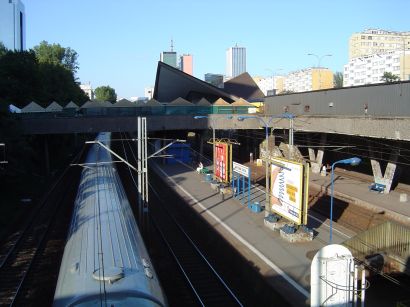
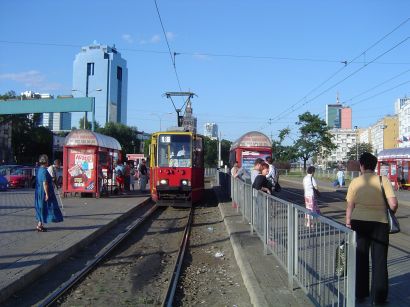
Even with all the boaters tied up bow-in along the kilometer-long walkway, nothing could be found for breakfast other than a cup of coffee served from the side of a truck. Stopping at a big gas station along the road in search of a muffin or bun proved useless; they only had chips and cookies. So, with an apple and a orange and some German cookies, we arrived in Warsaw, hungry, at noon.
 |
 |
|
|
|
Sunday is a good day to arrive in a big (1.7 million people) unfamiliar city; the streets are quiet. Following signs to the "Centrum" as we have always done, wasn't as successful as usual. No hotels appeared. It wasn't hard to find the exact center; the 35 story Palace of Culture is always visible. We followed a taxi driver's suggestion and found three hotels in one building. The most expensive was full with a Renault convention, the next in line wanted 100 Euro per night, plus breakfast, plus parking, plus Internet. We settled for the cheapest at 179 Zlotys per night, about $60. Internet was free, but only in the lobby. The room was small and exuded as much cheer as one can get from IKEA-style furnishings. Facing the interior court-yard, the window opened only a crack, letting in almost no fresh air until Elsa begged the manager to come and unlock it so it could fully open side-ways.
Breakfast was expensive, so we opted not to include it with the room registration. Nobody in the restaurant asked for identification when we stopped in for a cup of coffee in the morning, so we added some rolls and butter. That went unchallenged, so we added yogurt and fruit. We came back for a repeat performance the next morning and, for an encore, added sandwiches for the road. Nobody gets more mileage out of ham and cheese sandwiches than we do.
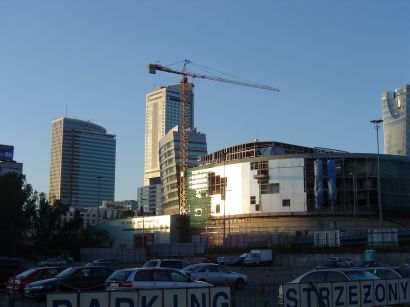 |
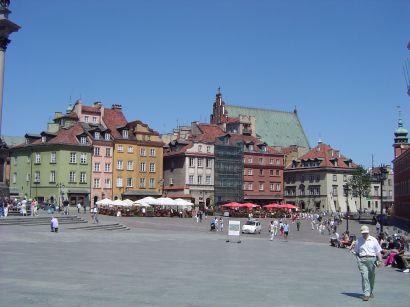 |
|
|
|
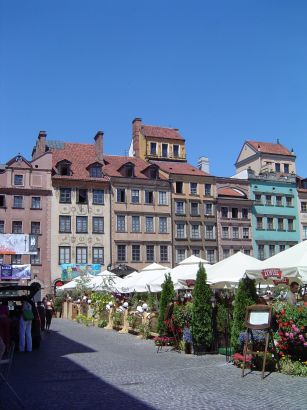 |
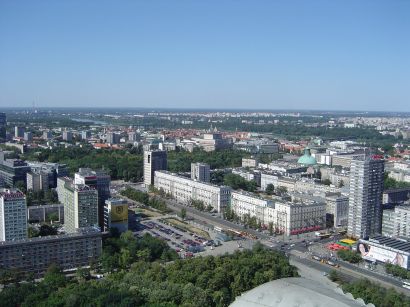 |
|
|
|
Monday, July 3rd
A city tour bus took us around the important sights of Warsaw, dropping us off in Old Warsaw at lunch-time. Our guide suggested we have lunch at a perrogi place we passed. The Pierrogeria was great.
Warsaw is Poland's largest city with 2 million people. The second largest is Chicago, with 1.2 million Poles. Destroyed almost completely during WWII, Warsaw has been rebuilt, but not entirely in the original style. The names Samsung, Sanyo, Hundai, LG, and Marriot are prominent on top of the largest buildings.
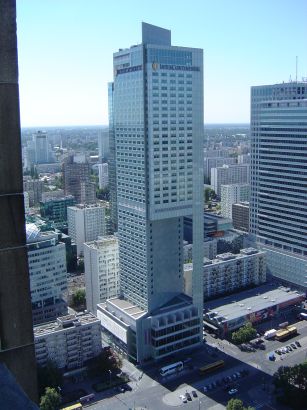 |
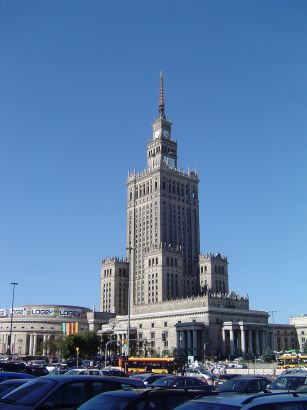 |
|
|
|
Tuesday, July 4th
We left Warsaw at 8:00 AM, heading south to Oswiecim. Alert readers will recognize the name of the Polish compound the Germans took over and called Auschwitz. The camp at Birkenau was partially destroyed by the fleeing Germans, but Auschwitz, 3 km away is intact.
Hotel Galicja in Oswiecim was comfortable, but a mosquito flew in the open window and started feasting on Elsa, our resident mosquito-magnet. World War III was narrowly averted when I flattened the beast.
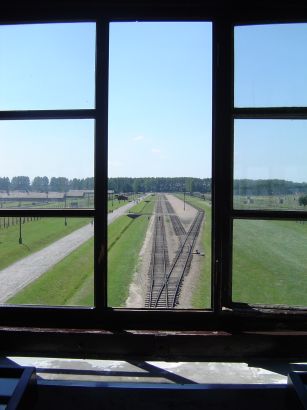 |
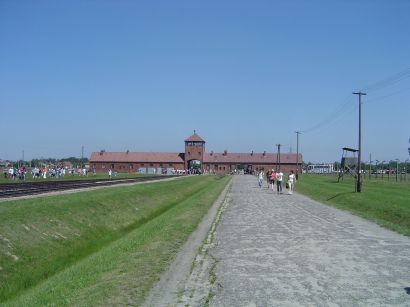 |
|
|
|
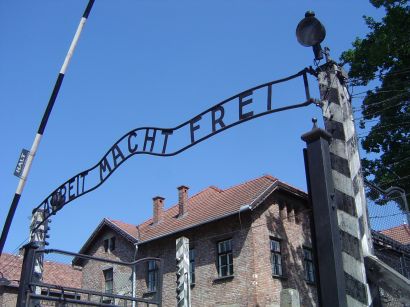 |
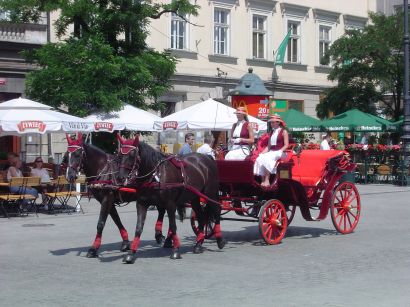 |
|
|
|
Wednesday, July 5th
Krakow was untouched by World War II, making it now one of Poland's most-visited cities. Unfortunately, it has been destroyed by tourists. No, it isn't dirty, it isn't noisy and the facades of the buildings in the Old Town have been retained. But the ground floor of every building, except the churches, has been turned into a shop offering the same merchandise you can get anywhere else in the world.
The Wawel Castle is unique, as advertised. I have never seen a more mixed-up architectural mess of domes, towers and spires. Unique is not always good. Sadly, I missed the dragon that shoots fire out of his nose. That would have made up for the other deficiencies of this World-Heritage site.
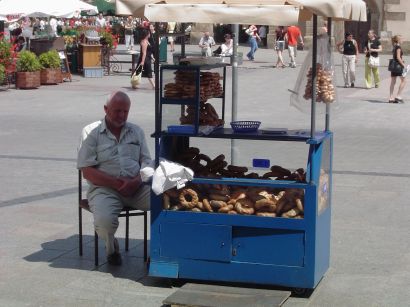 |
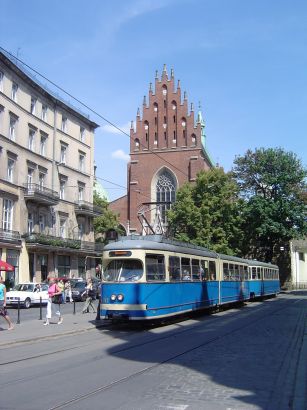 |
|
|
|
Thursday, July 6th
We left the Monopol Hotel in Krakow at a leisurely pace to arrive at the Wieliczka Salt Mine, 15km away, by 10:00 AM. That, according to the guide book, was the time of the first English tour of the day. In fact, the first English tour was at 9:30 AM, which we were able to join. Good information is still hard to find, no matter where you are. The tour starts with 350+ steps, spiraling down 100 meters. For two hours one wanders through a world comprised of salt, salt and more salt. Walls, floors, ceiling, all are carved from salt. Statues and wall plaques are all carved salt. There is a huge cathedral below ground which took years to carve out of solid salt. The chandeliers use salt crystals where glass might be.
Departing just before noon, we struck out for the Polish-Slovak border 100 km to the south. Construction zones and slow roads kept us down to what has become pretty much an average, 50 km per hour. That's an almost overwhelming 30 miles per hour.
We finally crossed the border into Slovakia at 3:00 PM. Formalities were minimal; we handed our passports in through a window to the Polish clerk who checked us out and repeated that at the next window for the Slovak clerk, who checked us in, never leaving the car. In five minutes we were on the road again.
A few miles into the country, we stopped at a road-side restaurant for a 4:00 PM lunch. The ham and cheese sandwiches prepared at breakfast had disappeared hours earlier. You can have a nice steak dinner in Slovakia for 180 Koruna or about $6.00.
Entering the town of Sabinov, we stumbled upon a nice new hotel, the Torysa, and screeched to a stop, since none of the little towns along the way offered any accommodations.
Friday, July 7th
Romania at Last
Another long, slow drive of 475 km with little freeway, lots of construction sites and plenty of trucks on two-lane roads. We managed to average no better than our previous 50 km per hour. We passed through Hungary without a hitch, except for a fuel stop. I planned on using a VISA card to buy gas, not having 7300 Florint in hand. Their credit card machine wasn't working, so I offered my remaining Slovak currency, at which they turned up their noses. We settled on 40 Euro and departed.
The border crossing into Romania was easy, but slow. The heat just made the queue seem longer. Clouds provided some relief from the sun by late afternoon, but only a few drops of rain fell.
The country-side is pretty and clean. Small towns, two or three blocks long, have many homes displaying woven baskets and linen for sale just outside the wall that separates the house from the road. There seems to be no lack of Snow White and Seven Dwarf statues for sale.
We passed at least twenty horse-drawn wagons on the highway. Most have a single horse, some have two horse-power. One had two donkey-power.
The storks have returned. Absent in southern Poland and Slovakia, many were seen nesting with their young in Hungary and Romania.
We tried to trade in our left-over Slovak currency in Romania, but nobody wanted it. We did get some Euro changed; 50 Euro got us 1,600,000 Romainian Leu. It sure feels good to have a few 500,000 bills in your pocket. Dinner, however, cost 605,000.
Alas, the old Lei is being transformed. Starting January, 2006, the 500,000 bill was replaced by a 50. Everything else is being divided by 10,000 as well. By the end of this year, the transition will be complete and all of the big notes will be gone. In the meantime, you can pay with old and new notes and get your change in the same way. Count your change carefully... you could be off by a factor of 10,000.
Instead of collecting a few pieces of paper money from each country, we should be collecting pieces of toilet paper; they really tell the story of an economy. From the softness of Charmin in America, we have something closer to rolls of sandpaper here.
We reached the point of exhaustion at Cluj-Napoca, a community of feature-less high-rise apartment blocks. Apparently not many residents own cars as hundreds of taxis clog the streets in front of the buildings.
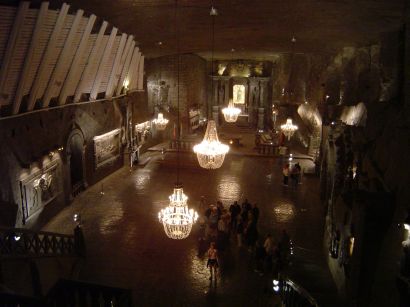 |
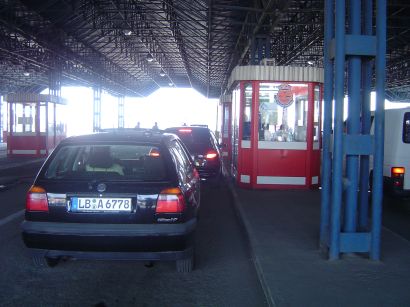 |
|
|
|
Saturday, July 8th
Romanians don't get up early on Saturday. The restaurant at the La Rosa hotel didn't even open until 8:00 AM. We ate as fast as possible and buzzed out of Cluj at 8:30.
Snatching defeat from the jaws of victory, we took the truck route around Tirgu Mures, instead of going through the town. The road we left was fine, the one we got was awful. The potholes were so bad, I had to use first gear to climb out of them. It didn't last long and we were soon back on the good road.
We enjoyed half a bowl of raspberries from a road-side vendor, until we discovered the bowl had been sitting on the ground and the bottom was full of tiny ants. The ants and bad berries went out the window at 100 km/hr.
After what seemed like a short drive, 300 km in 4 hours, we arrived in Brasov. Known as one of Romania's premier tourist spots, we found it full of Saturday afternoon weddings. The streets were full of cars, decorated with balloons, honking and carrying on. Couples in wedding garb were gathering in the park for photos after their ceremony. A passing shower didn't last long enough to spoil their parade.
I took the cable car to the panoramic view-point above the city. It really served only the restaurant at the top; there was no good place to look out at the city.
The first thing we saw when we entered the old-town walking zone was a set of Golden Arches. We came all the way to Romania to find McDonalds? The joke was on us... worn to a frazzle, we settled in at the Capitol Hotel for a fine chicken dinner brought in from the nearby Kentucky Fried Chicken.